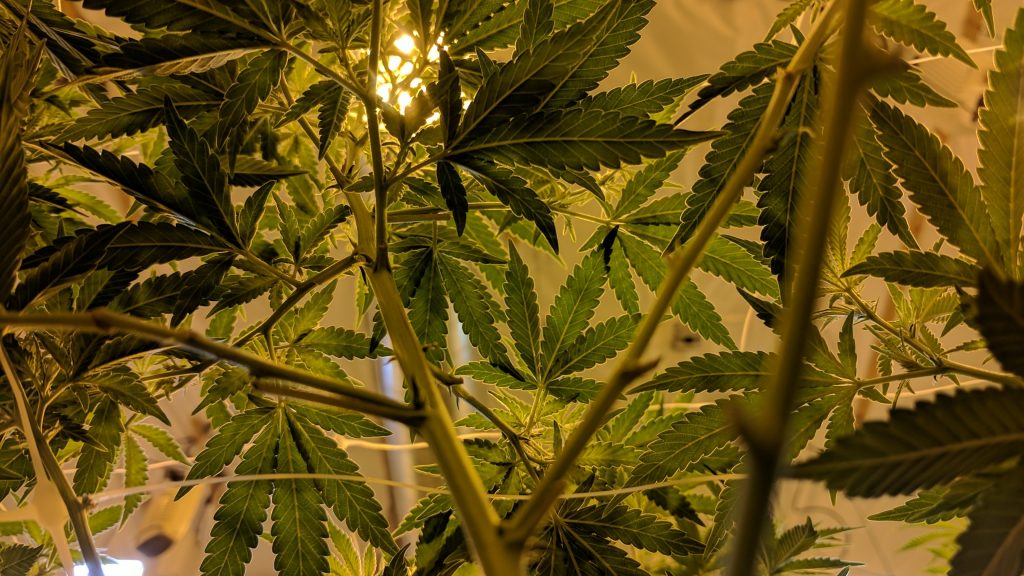How efficient is your cannabis facility design? The answer could make or break your cultivation operation. There are a million ways to approach cannabis cultivation, and growers have different space requirements depending on their vegetative growth cadence. But no matter your approach or methodology, a grow’s profitability comes down to how much flowering canopy your facility can accommodate per year.
We tell our clients all the time that hallways don’t make money. Neither do veg rooms, mother rooms, storage areas or lobbies, for that matter. When designing a cannabis production facility, it’s important to remember the only areas in a grow that generate return are flower rooms. Sure, you need enough space for all the support operations, but don’t lose track of the goal—to produce as much flower as possible in the space you have.
That doesn’t mean jamming as much canopy into a cultivation room as possible, however, without being mindful of OSHA requirements and other compliance metrics or facility design principles. Instead, a simple facility design plan review will reveal opportunities to increase your flowering canopy without sacrificing necessary ancillary spaces (hello, employee break room!) or operational flow. In addition to minimizing common space plan inefficiencies, a review will reveal those areas that are often overlooked and under-spec’d, including irrigation rooms, cleaning areas, and lavatories.
So how do you approach a facility design efficiency audit? We’ve created four size categories cultivators can use to assess what their ideal proportion of flowering space to overall facility size should be. For the purposes of this example, let’s assume we’re reviewing a single-tier flowering scenario. If you’re using or considering a vertical grow facility, simply double (or triple, depending on scale) the flowering canopy considerations and calculations below.
How to Calculate Your Cannabis Cultivation Facility Efficiency
When we assess a cannabis cultivation facility design, we use a proven method to calculate how efficient the layout is, and whether the operator has left any opportunities to increase production capacity on the table. The formula is simple: Divide your total flowering canopy by the total square footage of the facility. The resulting percentage shows how much of your facility is actually producing revenue.
This isn’t dissimilar to the approach used by retailers in other industries, which is to calculate total revenue per square foot of facility.
Average-Sized Cultivation Facility—10,000–20,000 square feet
The smaller the cultivation facility, the more challenging it can be to achieve a high proportion of flowering canopy to ancillary space. For facilities of 20,000 square feet and under, a 50-60% canopy-per-square foot ratio is ideal. Those utilizing less than 50% of the facility for flower operation may struggle with profitability. Filling more than 60% with flower, however, could make those ancillary operations feel squeezed.
Mid-Sized Cultivation Facility—20,000–50,000 square feet
Growers can begin to take advantage of economies of scale as their cannabis production facilities get larger, and can even achieve a canopy ratio of 60-75%. While veg, mother, drying and propagation spaces would likely need to be expanded slightly from the smaller grow tier, harvest and post-processing areas can most likely stay similar in size to the 20k facility. That means for cultivators who can scale from an average to medium-sized facility, most of the added square footage can be used to increase overall efficiency.
Large Cultivation Facility—50,000–100,000 square feet
Increased efficiency continues to trend up as growers graduate from medium to large-sized facilities. It doesn’t take so many more employees to run a 100,000-square-foot grow than a 50,000-square-foot facility, or even a 20,000-square-foot facility. The necessary square footage for ancillary spaces like offices, break areas, lavatories and even the irrigation room also doesn’t significantly expand, even as you add thousands of square footage dedicated to the canopy. This is especially true when you implement automation as part of your equipment selections. For this type of facility, a canopy ratio of 75-80% is expected.
MSO / Deathstar-Sized Facility—100,000+ square foot
As facilities cross the 100,000-square-foot mark, cultivators’ focus can sometimes pivot away from a canopy-maximization mindset to one more akin to traditional manufacturing. The latter perspective is one where operational complexity and increased staffing needs, bulk order storage and shipping logistics take on increased importance over continuing to scale flower production.
The overall canopy ratio at these mega-facilities tends to trend higher than operations of smaller scale. But unlike smaller facilities, underproducing flower isn’t a bottleneck—we usually expect a canopy ratio of 80%+ in operations of this size. Rather, excess square footage is oftentimes earmarked for future growth phases, post-processing, packaging, product manufacturing and R&D.
How does your facility stack up? If you aren’t hitting target canopy numbers, reach out today for a cannabis facility design review.
